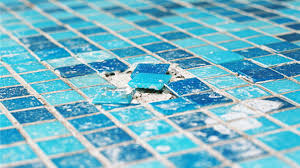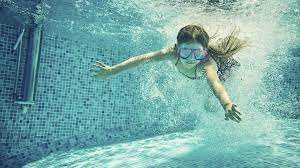When was the last time you peered into your swimming pool and thought, "I wonder what microscopic battle royale is happening in there right now?" Probably never. Most of us just want our pools to look clean, feel refreshing, and not turn our blonde-haired kids green. But beneath that sparkling surface lies a complex ecosystem that requires more attention than most pool ownership brochures let on.
As someone who's spent countless weekends with a telescopic pole in hand, cursing at leaves that seem magnetically attracted to water, I've often wondered: why didn't anyone warn me about the real details of pool maintenance before I signed up for this aquatic commitment?
The Invisible Enemy: What You Can't See WILL Hurt You
According to the Centers for Disease Control and Prevention, the average backyard pool can harbor a variety of microscopic guests that would make your skin crawl—literally, in some cases. From bacteria like E. coli and Pseudomonas aeruginosa to parasites like Cryptosporidium, your pool is potentially home to some uninvited visitors that don't appear in those dreamy pool installation commercials.
"The most shocking thing to most pool owners is learning that chlorine doesn't kill everything instantly," explains a microbiologist from the American Public Health Association. "Some organisms, like Crypto, can survive in properly chlorinated water for days."
This isn't meant to scare you out of your pool shoes. Rather, it underscores why detailed cleaning—beyond just skimming leaves and adding chlorine—is critical to maintaining a truly safe swimming environment.
The Chemistry Set You Never Asked For
Remember that chemistry set you had as a kid? The one with colorful liquids and test tubes that your parents immediately regretted buying? Well, congratulations—pool ownership means you've graduated to the adult version, only now the stakes involve skin rashes and green hair.
Water chemistry is the foundation of pool maintenance, yet it remains the most misunderstood aspect for many pool owners. According to the Association of Pool & Spa Professionals, improper chemical balance is the primary cause of pool problems, affecting everything from equipment longevity to swimmer comfort.
The key parameters to monitor include:
- pH levels (7.2-7.8 is the sweet spot)
- Total alkalinity (80-120 ppm for stability)
- Calcium hardness (200-400 ppm to protect surfaces)
- Chlorine (1-3 ppm for sanitation)
- Cyanuric acid (30-50 ppm to protect chlorine)
"It's like juggling five balls at once," says a pool maintenance veteran. "Drop one, and the whole system gets out of whack."
The problem is that these parameters don't exist in isolation. Adjusting one affects the others in a chemical dance that would make your high school chemistry teacher both proud and exhausted. This is precisely why many pool owners find themselves stuck in a cycle of over-correcting, creating a chemical roller coaster that wastes both money and time.
The Physical Cleaning Most People Get Wrong
Beyond chemistry, physical cleaning is where the rubber meets the road—or in this case, where the brush meets the algae. The National Swimming Pool Foundation recommends a comprehensive cleaning routine that goes far beyond the casual skim most owners provide.
A complete physical cleaning regimen includes:
- Surface skimming: Removing floating debris before it sinks
- Wall and floor brushing: Dislodging biofilm and preventing algae attachment
- Vacuuming: Removing settled debris and contaminants
- Filter cleaning: Ensuring proper water flow and filtration efficiency
- Deck cleaning: Preventing external contaminants from entering the water
"Most people focus exclusively on what they can see floating on the surface," notes a pool industry expert. "But it's what's happening on your walls and floor that will make or break your pool's cleanliness."
This labor-intensive process is why traditional pool maintenance feels like a part-time job. The Bureau of Labor Statistics doesn't track "weekend hours lost to pool cleaning," but if they did, the numbers would be staggering—an estimated 2-4 hours weekly for manual maintenance.
Enter Automation: How Robotic Cleaners Are Changing the Game
This is where technology has finally caught up with the pool industry's greatest pain point. Robotic pool cleaners like the Hydro-Puls from Xbenbot have revolutionized the physical cleaning aspect of pool maintenance.
Unlike older suction-side or pressure-side cleaners that rely on your pool's existing pump and filtration system, modern robotic cleaners operate independently with their own motors, filtration, and programming. The difference is like comparing a horse-drawn carriage to a Tesla—both will get you there, but the experience and efficiency are worlds apart.
The Xbenbot Hydro-Puls, for example, brings several game-changing advantages to the table:
- Comprehensive coverage: Programmable patterns ensure no area is missed
- Intensive scrubbing: Rotating brushes actively remove biofilm that passive systems miss
- Independent filtration: Captures debris without taxing your main filter system
- Smart navigation: Learns your pool's specific contours for optimized cleaning
- Energy efficiency: Uses a fraction of the electricity of older cleaning methods
"The first time I used my Hydro-Puls, I was honestly skeptical," admits a pool owner from Arizona. "But when I saw it climbing walls and scrubbing the waterline—areas I usually neglect because they're such a pain to clean—I was sold. It's like having a meticulous pool guy who works for electricity pennies and never takes a day off."
The Details That Make All the Difference
While robotic cleaners handle the heavy lifting, understanding the finer details of pool cleaning can elevate your maintenance game from adequate to exceptional. These are the aspects that separate the crystal-clear pools from the "good enough" ones:
The Biofilm Battle
According to research from the Water Research Foundation, biofilm—a thin, slimy layer of microorganisms that adheres to surfaces—is the precursor to most pool problems, from cloudy water to stubborn algae blooms. Traditional cleaning methods often skim the surface (literally) of this issue.
"Biofilm is to pools what plaque is to teeth," explains a microbiologist. "You can't just rinse it away—it requires mechanical scrubbing to break its grip on surfaces."
The Xbenbot Hydro-Puls tackles this issue with its multi-surface brush system, specifically designed to disrupt biofilm before it becomes established. The brushes rotate at the optimal speed to dislodge microorganisms without dispersing them throughout the water, a common problem with less sophisticated cleaners.
The Filtration Factor
The Environmental Protection Agency notes that effective filtration is perhaps the most overlooked aspect of water quality management. Many pool owners focus exclusively on chemical treatments while neglecting the mechanical removal of particles that serve as "rafts" for bacteria and other contaminants.
Multiple studies have shown that removing physical debris can reduce chemical requirements by up to 30%. This is where the Hydro-Puls's advanced filtration system shines, capturing particles as small as 2 microns—far smaller than what the human eye can detect.
"Think of it this way," says an Xbenbot engineer, "your pool water passes through the robot's filtration system multiple times during a cleaning cycle, receiving additional treatment beyond your main filter. It's like having a auxiliary filtration system that actively seeks out debris rather than waiting for it to reach your skimmer or main drain."
The Waterline Challenge
According to the American Chemistry Council, the waterline of your pool is where some of the most stubborn cleaning challenges occur. This boundary between air and water creates a concentration zone for oils, minerals, and organic compounds that form the notorious "bathtub ring" of pool ownership.
Most manual cleaning approaches and many automatic cleaners neglect this crucial area. The Hydro-Puls, however, is specifically designed to climb walls and scrub the waterline with precision, addressing this common pain point.
"The waterline is where guests notice grime first," notes a pool service professional. "You can have perfect chemistry and a clean floor, but a dirty waterline makes the whole pool look neglected."
The Seasonal Cleaning Cadence
Pool cleaning isn't a one-size-fits-all proposition throughout the year. The National Oceanic and Atmospheric Administration confirms what experienced pool owners already know—seasonal changes dramatically affect maintenance requirements.
Spring Wake-Up
After winter dormancy (even in warmer climates where pools aren't closed), spring brings unique challenges:
- Pollen infiltration that can clog filters
- Algae blooms from increasing sunlight and temperature
- Rainwater dilution affecting chemical balance
This is when the Hydro-Puls's intensive cleaning capabilities prove particularly valuable, handling the heavy lifting of post-winter recovery.
Summer High Season
During peak swimming season, the cleaning focus shifts to:
- Increased bather load introducing contaminants
- Sunscreen and cosmetic products creating surface films
- Higher temperatures accelerating chemical reactions
Programming your Xbenbot for more frequent cleaning cycles during this period ensures your pool remains inviting despite heavier use.
Fall Transition
As swimming activity decreases but environmental factors increase:
- Falling leaves and debris requiring more filtration
- Cooling temperatures affecting chemical efficiency
- Preparing for reduced maintenance in colder months
The programmable nature of the Hydro-Puls allows adjustment to these changing conditions without requiring complete reprogramming.
The Freedom Factor: What Clean Really Means
At its core, pool ownership should be about enjoyment, not maintenance. The American Time Use Survey reveals that leisure time has been steadily declining for Americans, making the hours spent on pool maintenance particularly precious.
"What people really want isn't just a clean pool—it's the freedom from worrying about their pool," observes a consumer psychologist who studies homeowner attitudes. "They want to look out the window and see an inviting oasis, not a looming weekend chore."
This perspective shift explains the growing popularity of robotic cleaners like the Xbenbot Hydro-Puls. Beyond the practical benefits of superior cleaning, they deliver something even more valuable: peace of mind and reclaimed time.
As one Hydro-Puls owner put it: "I used to spend my Saturdays cleaning the pool. Now I spend them in the pool. That's the real game-changer."
The Bottom Line: Details Matter, But So Does Your Time
Pool cleaning details matter—the chemistry, the biofilm prevention, the filtration efficiency, the waterline attention. These elements create the difference between a merely functional pool and a truly exceptional aquatic experience.
But your time matters too. The beauty of modern cleaning solutions like the Xbenbot Hydro-Puls is that they handle these crucial details without demanding your personal attention. The result is the best of both worlds: meticulous cleaning and the freedom to enjoy the fruits of that labor.
After all, you didn't invest in a swimming pool to become an amateur chemist or spend your weekends attached to a telescopic pole. You wanted a place to relax, entertain, exercise, and create memories. With the right cleaning technology, you can get back to that original vision.
So the next time you're floating peacefully in your crystal-clear pool, take a moment to appreciate the invisible work happening beneath you—the microscopic battles being won, the chemistry being balanced, and the surfaces being scrubbed. Then raise your drink to the technology that made it possible without requiring you to break a sweat.
Because the real detail that matters most in pool cleaning isn't the pH level or the filter pressure—it's whether you have the time and energy to enjoy the pool when the cleaning is done.




Leave a comment
This site is protected by hCaptcha and the hCaptcha Privacy Policy and Terms of Service apply.